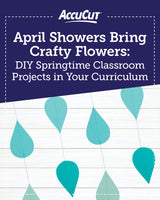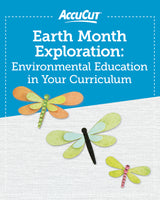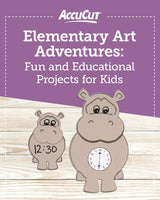Your cart is empty.
Black History Month: Celebrating Diversity Through Curriculum and Education
5 ways to promote diversity and celebration of our own stories in the classroom
February is a time to celebrate Black History month - a chance to share stories of strength, wisdom and overcoming adversity. In elementary school, scholars are given chances to learn about change makers and dreamers from the black community. This is an opportunity to educate, promote and express how our stories are all worth sharing. We are slowly learning today that the narrative has often been misinformed, mishandled and at times outright falsified as a way to make the stories more comfortable to share. We are now learning ways to teach on the injustices that took place as a way to hopefully create a more fair and equitable future in our country. I have put together some activities and projects that will allow students to consider the lessons we can learn from powerful life stories and then extend that knowledge to help them look within to spark parts of themselves that can help make our world a better place for all. To take it a step further the final project in this blog is a way for scholars to connect to their own families and ancestors, allowing them to connect to and share a deeper level of understanding that comes with knowledge about one's own lineage.

1. Research Notebooks
Begin this project by reading stories about the lives of both Martin Luther King Jr. and Harriett Tubman, sharing viewpoints from both a male and female will allow your scholars more ways to connect with the person they are learning about. Some good book options could be Aunt Harriett’s Railroad in the Sky by Faith Ringgold and Martin's Big Words: The Life of Dr. Martin Luther King, Jr by Doreen Rappaport. If you teach upper elementary you could also assign partners or groups of students to read books from first time biographies such as from the Little People, Big Dreams series. Students will take notes or write a response to the stories they either heard or read. They could then present their findings or turn in their notebooks as a way to share what new information they gained from this learning. To create the notebooks you will want to take out your MARK 5 Die Cutting Machine. You will also need to have some paper prepared to add to the die cut as a way to make the notebooks for students to add their writing. You will also need to have the Book-Martin Luther King - Jr Die Cut and the Book-Harriet Tubman Die Cut. Create both a cover and back page using cardstock paper and then use the die to cut out 3-5 pages for each notebook. Assemble the notebooks with staples, yarn or paper fasteners. These books would be a great item to share with families to highlight learning that is happening in the classroom.

2. Fact/Quote Box
Another great way to share the importance of Black History Month with students that is easy to manage and can be done in quick moments of transition would be to create a box that you can fill with quotes for important Black History makers or facts about significant people, places and events that are a part of Black History in our nation. Many school districts will suggest a list of historical figures for teachers to educate students about. Doing a little personal research to find facts and quotes that you can write on pieces of paper. Students can pick out a slip of paper to share with the class, you can all take time to discuss the fact or quote and what is significant about it. To create the box you will need to use the MARK 5 Die Cutting Machine and you will also need to use the Box w/Handle Die Cut. Once you have cut out and assembled the box you can place the papers with quotes and facts inside for students to grab. This activity will work well because you don't have to set aside a big chunk of time, instead you can pull out a slip on your way back from recess, as a transition between classes or even as an end of the day class discussion.

3. What Makes me Unique Heart Books
This is another great way to extend the topic of Black History Month and learn how diversity makes us a stronger community. Building upon the stories and lessons being taught on important black leaders from the past you can then take time to have students look within themselves to find things that make them unique and inspiring. One of the goals from historical learning is to find ways to impact the future in positive ways. This project gives scholars the opportunity to think critically about how they themselves can make a lasting impact on our society. For this you will need the MARK 5 Die Cutting Machine and the Album-Heart Die Cut. Prepare the Heart Books by creating a cover, back page and several inner pages with the large heart. Cut out some of the additional cut outs that students can select and add to their heart to decorate. Then have students write one of their own inspirational traits on each page. They can write how they use this trait, why it is positive and how it can impact the world in a positive way. Use a binder ring to put the students' Heart Books together and allow them time to share with the rest of the class what makes them unique. This is a fun opportunity for students to explore what makes them special and the whole class can celebrate the diversity they have in their learning community.

4. What Makes My Family Unique House Books
This next activity extends what the students have done with their own personal heart books and gives them an opportunity to share what makes their immediate family special and unique. Grab your MARK 5 Die Cutting Machine and you will also need both the Album-House Die Cut and the Album-Mix & Match #1 DIe Cut. Prepare for this activity by creating a cover and back page using the House Die Cut. Then cut out and add several of the Mix and Match cut-outs to add in between the front and back page. Students will have the opportunity to decorate their homes. Then have them draw everyone who lives in their home on the first page in the book. Scholars can then write a short story about who they live with on the next page. Lastly, give students several pages to share special and important family customs, traditions or memories that make their family unique. Allowing time for students to share their books will also be a great way to celebrate one anothers unique stories.

5. Family Tree Project
The final activity that can be used to wrap up this incredible celebration of Black History Month would be to have students create their own family tree. This will likely take some work on the teachers part. Sending home a questionnaire about family history, ancestors and their counties of origin as well as asking for family photos that can be added to the family tree page would be very helpful. Scholars can use the information given from their families to help complete their own family tree. You will need to use your MARK 5 Die Cutting Machine and the Tree-No Leaves #1 Die Cut. Make sure to have cardstock or poster board for each student to attach their trees. Students can use the branches of the tree to showcase their ancestors or they can create a timeline at the bottom of the page. Students can then add family photos, maps of their families original home countries, as well as written stories they learned from their parents, aunts, uncles or grandparents.

These projects can come together to make a very meaningful way of looking at important stories from history but then also turn it into a way to see themselves as change makers and they can imagine themselves making a better future. It also allows scholars to explore their own families and what makes them diverse and unique. It is a great series of activities that will connect the past, present and future.
Written by Amy Pinegar




